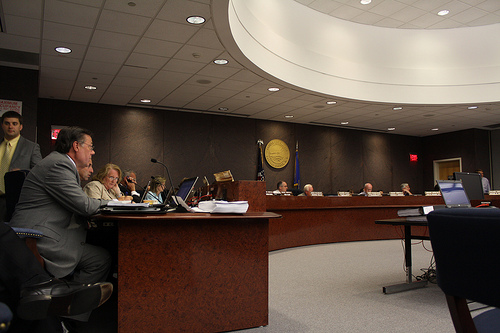The purpose of U.S. Immigration and Customs Enforcement (ICE) administrative inspection is to determine whether the employer has violated the prohibitions against hiring or continuing employment of unauthorized aliens and Form I-9 violations. Usually, a 72-hour notice will be given to employers preceding the ICE Form I-9 administrative inspection. The Notice of Inspection indicates the date, time, and place for the inspection and the documentation that the employer is requested to produce.
Form I-9 inspection may be conducted by any of the three authorized government agencies: Department of Homeland Security (DHS), the U.S. Department of Labor (DOL), or the U.S. Department of Justice Office of Special Counsel. DHS may initiate investigations after public complaints. Form I-9 inspection may be conducted either on the employer’s premises, at an agency office, or at the agency’s discretion. Employers that use electronic Form I-9 storage systems need only retrieve and reproduce the forms electronically retained in the storage system and supporting items requested by the inspecting agency.
If the employer does not comply with the request to present the forms and supporting documents, ICE may compel production by issuing a subpoena. A delay in the production of the forms and supporting documents may be considered a violation of compliance requirements. After a Form I-9 inspection, ICE will notify the employer as to its results. The current procedure is to notify the employer in writing of the result of the completed inspection. However, informal manner of notification may also been recognized as a valid notification as the Ninth Circuit has held that “even after an informal oral government notice, it is important for the employer to terminate the employee promptly to avoid knowingly continuing to employ violation.”
ICE has the policy to consider the percentage of I-9 forms found in violation of the compliance requirements in determining whether a Notice of Intent to Fine should be issued rather than a warning. The Notice of Intent to Fine contains a proposed fine amount. Employers may request a conference with DHS before or after Notice of Intent to Fine is served on the employer. To avoid a final order, employers must respond to the Notice of Intent to Fine by requesting a hearing before an administrative law judge.
To avoid compliance fines, it is essential for employers, especially high profile employers and those who enroll in E-Verify to implement effective immigration compliance policies and/or adopt a customized immigration compliance program. For example, employers may consider to have a written Form I-9 verification policy which may be used by the compliance staff as a reference as to the requirements of the law. Employers may also consider developing and maintaining a tickler system to keep track of the expiration dates of employee Form I-9 employment authorization documents to allow sufficient time for re-verification. In addition, training on worksite compliance will help the company to develop a culture of compliance which continues to provide staff with confidence that they are performing their compliance tasks correctly. An effective compliance training program is also good evidence that the company treats its compliance responsibilities seriously.
In sum, using tools to self-evaluate the employers’ compliance policy and system is critical to avoid immigration-related compliance liabilities.
For more information please visit our website.
 Visa Lawyer Blog
Visa Lawyer Blog


